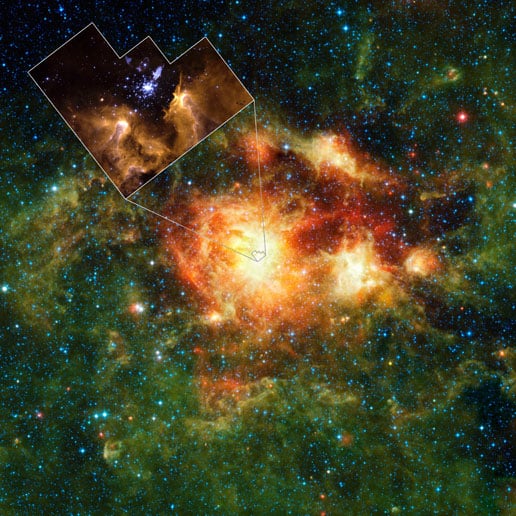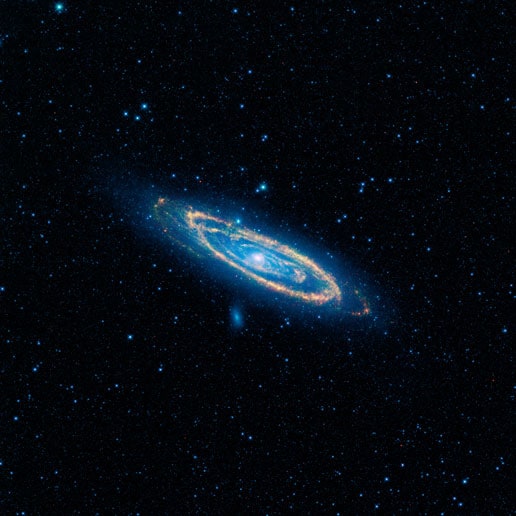
Image of stars being born in a cloud of gas and dust. Inset shows the centre of the cloud taken by NASA’s Hubble Space Telescope (credit: NASA)
By Michael Banks
NASA has released the first images taken by its Wide-field Infrared Survey Explorer (WISE space telescope, which launched in mid December.
The seven awe-inspiring images include a star-forming cloud teeming with gas, dust and massive newborn stars (above), a detailed picture of the Andromeda galaxy — the closest large galaxy to the Milky Way — and a comet streaking across the sky.
Costing $320m, WISE is an infrared space telescope that will probe the coolest stars in the universe and the structure of galaxies at four wavelengths between 3 – 25 micrometres. As WISE is designed to detect infra-red radiation from cool objects, the telescope and detectors are chilled to 12 K with liquid helium.
WISE will circle the Earth’s poles at an altitude of 525 km scanning the entire sky one-and-a-half times in nine months where it will also measure the diameters of more than 100 000 asteroids.
Look out for more amazing images soon.

Image of the Andromeda galaxy taken by NASA’s WISE craft (credit: NASA)



